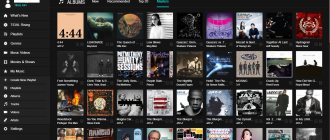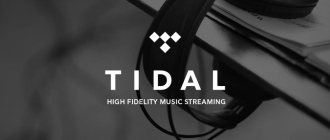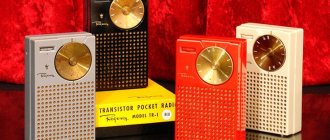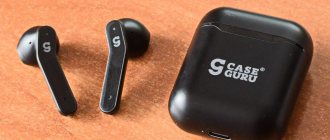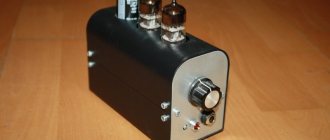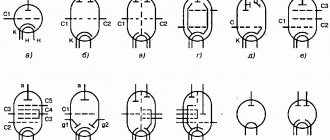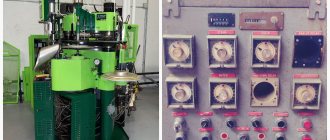The music streaming service Tidal was launched in October 2014 in the US and UK by the Scandinavian company Aspiro. High quality music (Free Lossless Audio Codec - FLAC format) was immediately promoted as its distinctive feature. Lossless audio has a bitrate of 1411 Kbps; a Tidal subscription with this format costs $20 per month.
For comparison, the popular Spotify service (more than 60 million subscribers) offers a maximum of 320 Kbps for $10 per month, the less popular Deezer (six million subscribers) had already launched a lossless format also for $20 per month. Both Spotify and Deezer have a free version with ads, Tidal only has a paid subscription.
In terms of music library, Spotify has over 30 million songs across 58 countries, Deezer is available in 180 countries with 35 million songs. Tidal has a music library of 25 million songs, but managers said after the launch that music is only part of the service. The company noted that users get access to 75 thousand videos, as well as texts - articles and interviews.
Tidal received positive reviews upon launch. The main disadvantage of the service was considered the lack of a free subscription, but critics agreed that music lovers will like the lossless format, and it’s worth paying for it.
Jay-Z deal
In January, American rapper Jay-Z's Project Panther Bidco company offered $56 million for Aspiro. The deal went through, and the service was relaunched at the end of March. The ceremony dedicated to the relaunch was attended by 16 famous musicians: Jay-Z himself, Kanye West, Rihanna, Madonna and others. All of them, as it turned out, are co-owners.
They decided to make this fact the main “trick” - the service, they say, belongs not to greedy corporations, but to the musicians themselves. Another distinctive feature of Tidal, according to co-owners, is higher payments to musicians. Spotify pays music rights holders 70% of revenue, Tidal promises 75%.
It is not yet clear whether there is a reason to switch to the streaming service from Jay-Z and friends. The owners of Tidal believe that this reason should be exclusives. For example, Rihanna's new song "Bitch Better Have My Money" was originally only available on Tidal. It recently became known that Jay-Z will perform an entire concert for subscribers of the service. The rapper promises that Tidal users will hear songs that have rarely or never been performed.
Download TIDAL
Below is a link where you can easily download the latest version of the program to your device. Download and get access to really high-quality music.
- Install on Google Play
- apk(64.14 MB)
What's new in this version
- We have fixed bugs and improved performance.
- Turn on updates so you don't miss anything.
Download previous versions
- apk(64.12 MB)
- apk(64.12 MB)
- apk(64.08 MB)
- apk(64.08 MB)
- apk(64.09 MB)
- apk(64.07 MB)
- apk(64.01 MB)
- apk(63.27 MB)
- apk(60.53 MB)
- apk(60.51 MB)
If you have questions or problems installing the application, please write about it below in the comments. We will definitely answer all questions and help you sort out the installation. You can also leave your review of TIDAL here if you are already using this application.
Rich and getting richer
Press reaction to Tidal's relaunch has been overwhelmingly poor. As Billboard wrote, early critics noticed that Tidal is an exclusive club of already wealthy musicians who want to make even more money. The co-owners were reproached for organizing a pompous event, at which they - owners of decent fortunes - from the stage called on fans not to be greedy and spend more on music. Fans on Twitter, in turn, called for calling a spade a spade and not ascribing to themselves the role of saviors of art.
Stop pretending this is some righteous social crusade. #TIDALforALL #IllStickToSpotify pic.twitter.com/XGRc4eq2te
— Miss Laura (@Laura_Loo812) March 31, 2015
Tidal owners also got it from their colleagues. Death Cab for Cutie frontman Ben Gibbard said that if he were Jay-Z, he would bring ten indie musicians on stage and tell them how much his service would pay them and all the other talented people in the music industry who are struggling to make ends meet. “I think they definitely screwed it up by having a bunch of millionaires and billionaires on stage complaining that they weren't getting paid enough,” Gibbard said.
British singer Lily Allen wrote on Twitter that while she loves Jay-Z, she considers Tidal expensive compared to other services that have free subscriptions. In her opinion, users would rather go to pirated sites and torrents than pay that kind of money, and in the end it will only be worse for artists.
Exploring the Tidal service: tricks with MQA
They say that the future of the most popular lossless service is quite vague. But the music is still playing and it's never too late to put your hi-fi stream under the microscope.
This is not our first material about Tidal. The previous article talked about the nuances of setting up the interface, and attempts were made to analyze the correspondence of the content to the original soundtracks. During this time, two significant things happened.
Tidal Hi-Fi now costs absolutely nothing to subscribe to. For three and a half dollars on ebay you can buy three months, and for thirty - lifelong access to the world's music reserves. All that remains is to check these reserves for purity of origin.
And we will avert our eyes to the second useful thing and will not give direct links. But you can admit something to honest people. In closed communities, the pirate brothers have created more than one utility that allows you to pick out and save any music directly from Tidal servers. Those. Now, like last time, I don’t need to fence a circuit with a USB converter and a digital recorder, recording a Tidal stream in real time. The albums you are looking for now simply end up in the right folders with diabolical speed. So let’s compare these takes with similar music content that was previously purchased on CD or through online purchases.
Let's start with lossy. Of course, Tidal is overwhelmingly a lossless resource. But sometimes it happens that on some little-known albums in the Tidal menu, the treasured letters Hi-Fi or Master, alas, do not light up. All this musical material is stored and broadcast in the AAC codec with a miserable bitrate of 96 kbps, such things. However, this is not the only option for lossy broadcasting. If you save traffic (for example, in 3G), in the player settings you can select the High stream width, and then instead of a lossless stream, music will be transmitted in AAC with a bitrate of 320 kbps. This is, in my opinion, the most optimal option for portable audio data compression. Now let's take a closer look at those same mysterious audio files from the Masters section.
Tidal is known to have a ton of them, but they are all encrypted with the controversial MQA encoder. MQA is unpacked only on the fly, through a proprietary application, or through a DAC with the appropriate license. This means that even if we stole such an audio file from Tidal, no program is yet able to exclude this MQA signature and resave the file to the original original.
It is also known that neither the musicians themselves nor the studios engage in MQA coding of their albums. In the Meridian presentation, this possibility is, in principle, discussed, but I am not yet aware of sound recording equipment where the analog signal is converted into digital form, taking into account a special MQA procedure. At the moment, finished masters from all labels are transferred to a special office affiliated with Meridian, which flashes them with MQA code, checks them for errors and returns them back. This kind of audio material has already gone beyond Tidal itself. For example, in the Qobuz store you can find Charlotte Gainsbourg's latest album with an MQA signature. This can be seen from the tag recording, and from the spectrogram too. There is simply no other option for highres. Is it good or bad?
Charlotte Gainsbourg's album "Rest" is already sold encoded in MQA. At Qobuz, of course, they don’t say a word about this
Overall this is more bad than good. On the one hand, it is quite possible to reproduce such audio under normal conditions. This is a regular 24-bit FLAC with 44.1 or 48 kHz sampling. Well, still not quite ordinary. And not quite 24-bit. As I already showed in the previous material, all the additional HD information is packed into a small high-frequency noise in the 19-20 kHz region. Its presence is indicated on the spectrogram by red arrows. This is the very “memory of highres”.
Thus, by slightly reducing the resolution (i.e., bit depth) of the stream, Meridian then offers a special decoder to restore harmonics above the sampling frequency. It all looks like “listen to traditional quality,” but the key to high-res lies in only one secluded place.
The concern for traffic and uninterrupted streaming can still be understood when it comes to heavy 24-bit/96 kHz HD files. There are no questions here, and I would even object to the skeptics of MQA who call it a lossy format (i.e. lossy coding). This is an incorrect accusation. With the same success, you can call the contents of the CD lossy, since its source was also once a 24-bit / 96 kHz studio master. There, too, there was a decimation of the original, and, believe me, much greater than what Meridian offers. In general, MQA is still lossless, but with a number of features, one of which I don’t really like. The MQA format brings under one brush a lot of 24/44 music, which is now the absolute majority of new releases.
I deliberately did not bother with any special audiophile publications and turned to the most common content, with modern brutal mastering. Let's look at the 2015 edition of Duran Duran as an example.
Everywhere, including on HDtracks.com, the album “Paper Gods” is presented in 24 bit / 44.1 kHz, no higher. What's on the Tidal server? Again, 24 bit / 44.1 kHz, but with the injection of noise, which is useless in this case, which we saw in Charlotte Gainsbourg. Why is it needed here and what “highly discrete information” does it contain? According to this document, this may also be a set of certain cryptographic keys for data authentication, like DRM. This has nothing to do with the music itself; fortunately, it can be compared with the original. What do we see?
Original Duran Duran HD track from the album “Paper Gods” in 24 bit / 44.1 kHz
Initially, the soundtrack on “Paper Gods” was very harshly processed by the maximizer, with maximum levels stopping 0.16 dB from the edge. With such borderline values, any dynamic data processing will inevitably throw some of the peaks beyond the 0 dbFS red line. That's how everyone records music these days, unfortunately. In the MQA version of “Paper Gods” the main signal was slightly increased in volume level just to 0 dbFS to catch the clipping even more! In the picture below it looks like this before it gets to the Meridian decoder. It cannot be said that there was a linear change in the volume level; the proportions in peaks and troughs changed slightly. Is it worth running such content on a regular DAC?
MQA-encoded audio file of the same Duran Duran track, stored on the Tidal server.
MQA apologists, including the most pompous (“don’t look at the specifications, listen to the music”) chatterers from Absolute Audio magazine, claim that the miraculous recipes of Meridian pre- and post-filters ennoble almost any audio stream. But is this a reason to stamp all the high-res in a row with MQA tattoos? Some people like to do upsampling using SoX algorithms. Yes, for some DACs this is a more preferable operating mode, so what? Some people even get rid of any filters in NOS-DAC. Meridian believes that DSP processing the original master with one of the varieties of the minimum phase filter somehow radically changes the sound? What are you saying! About ten years ago, when DACs with the ability to select a digital filter appeared, people played with them and didn’t notice much of a difference. But there was a full set - both linear-phase and minimum-phase, but what's the point? The influence of a digital filter on the sound character of a component is, to put it mildly, exaggerated.
In this case, you can put all the finished music albums, for example, into diff files and continue listening to them exclusively in the DSD domain. As you have seen, this idea works great even on cheap Chinese DACs; you don’t have to worry about digital filters anymore. Actually, most of the SACD was made from ordinary PCM tracks - listeners were quite satisfied with the specifically soft sound at the output - and for a long time the media itself was almost impossible to copy, to the delight of copyright holders. Tidal and Meridian also offer something similar in this hybrid successor to the ideas of HDCD and SACD. But maybe our “Durans” in clipping will at least feel better after the MQA decoder? Well, again you will have to capture the PCM stream at the output of the Tidal desktop application with the recorder.
When unpacking a Duran Duran track into Tidal, upsampling occurs to 88.2 kHz with the so-called overshoot. "alias" interference
As you can see in the picture above, there is a doubling of the original sample rate of the Paper Gods album. I've demonstrated this same trick before with Beyonce and other artists' albums in the same time signature. It can be assumed that such a signal will be easier to process, but there is no less clipping on it, quite the contrary.
The amount of clipping has increased in the Duran Duran track unpacked on Tidal
However, you should not consider the MQA coder a total bulldozer. It depends on what you use it for. On 24/44 and 24/48 originals, I don't see the point in MQA. But when it comes to encoding heavier high-cuts, the system really works. Take the recent re-release of Sepultura's Roots album in 24-bit/96kHz. On the Tidal server, this material is served in FLAC format at 24 bit / 48 kHz, and then decompressed in the Tidal application to the original 24 bit / 96 kHz. This is another matter - everything is unfolding correctly.
Spectrograms of the original source (HD Tracks) and the title track of Sepultura from the album “Roots” decoded via Tidal
Fortunately, there was no clipping in the original “Roots”, and it was not found in the MQA versions, either encoded or decoded. The difference between the peaks is minimal, at the level of hundredths of decibels. The frequency range of harmonics above 24 kHz has been restored quite reliably. Of course, the data set no longer corresponds to the original, but the dramatic difference is not felt by ear. In any case, in the ABX test I scored the classic 50% hits.
Now let's move on to a much larger sample. Will Tidal be able to replace the home's stock of CD-quality music, beat-for-bit? To answer this question, I compared more than thirty albums from my collection with similar releases presented in the Tidal catalog. The primary task was to check for matching checksums of data in a pair of audio files.
The main verifier of this difference was the Compare WAV's function, which everyone can find in the EAC CD ripper. In order not to clutter the results, I tried to avoid albums with platinum editions, since in these cases there is likely to be a discrepancy in data even at the level of CD editions printed in different countries. Compare WAV's results were divided into three groups:
1. 100% match of all data in the file;
2. Match audio data with the exception of the so-called. offset (a short chain of zero samples at the beginning or end of the audio track);
3. Partial or complete data discrepancy.
The first group included (i.e., completely coincided with files from Tidal) exclusively web releases that I got online. These could be resources selling music like bandcamp, but this also applied to pirated extraction through torrents - specifically those where a web release was indicated, and not a CD rip.
All is clear. Complete match of a pair of WAV files
CDs (i.e. my and other people's CD copies with confirmation of the accuracy of the rip checksum according to the AccurateRip online database) fell into the second group. As already noted, the discrepancy with the Tidal content was expressed only between tracks - a handful of zero sectors, which are not related to the phonogram itself.
It is useless to raise the question of the true source in this case. The Tidal catalog could easily contain a rip with an unset CD drive reading offset. Don't be fooled into thinking that label staff are maniacs like us with EAC or XLD. The human factor has not been canceled. This is especially true for old CD releases from around 1994. We put the disc in the drive, made a copy through iTunes, and hello. The offset of such a copy is guaranteed to be different. There are more than four thousand computer drives in the AccurateRip database, and they all have their own individual offset values, which should be taken into account if you want to get a bit-by-bit copy of a CD image.
This pair differs from each other by the presence of offset in the zero zone
On the other hand, even if the label provides the same files for online distribution and CD circulation, I know from my own experience that a rip from a fresh CD will not correspond to the source. Again you get at least a small offset in the zero zone. These are the features of marking and indexing a CD card, which appeared long before the file structure we are familiar with.
And the most intriguing, of course, is the third group. Here I included incidents (11 pairs in total) with any deviations, even the most harmless ones, that were studied in the audio editor.
Sometimes the volume of the tracks varied slightly. This happens with CDs too, especially in large batches in different locations. Somewhere the technicians tidied up (or, conversely, turned up) the volume a little before launching into circulation. It happened that only two of the three coincided - the web release and Tidal. But on the CD, someone tampered with it, and there is a completely different set of data there. This despite the fact that the levels and peaks are the same everywhere!
There were also revelations. The FLAC I honestly bought twice on bandcamp turned out to be an upconvert from lossy, which had to be replaced with a double from Tidal. However, for the sake of symmetry, the Tidal catalog also contained a couple of albums by the same artist, formally with the title lossless, but, alas, the spectrogram showed an upconversion.
How does this all sound in comparison? For a healthy person who loves music and wants her to sing along with him throughout the day, of course, it’s absolutely the same. But you can let the demons into your soul, imagine the audio stream as a lake. And on this unsteady surface, like the legs of a water strider, a million factors run. This could be a version of the FLAC encoder (by the way, did you know that 1.3.2 compresses the file worse than the old 1.2.1?). Or, for example, kilobytes of comments and an embedded picture in the ID-Tag of an audio file. And then the difference will begin to haunt you, not only with the zero sector offset, but even on files with the same checksum. Be afraid to play such games, better listen to Tidal while you can. We are not delighted with his tricks with MQA, but in other matters this resource is a great help and can be trusted.
